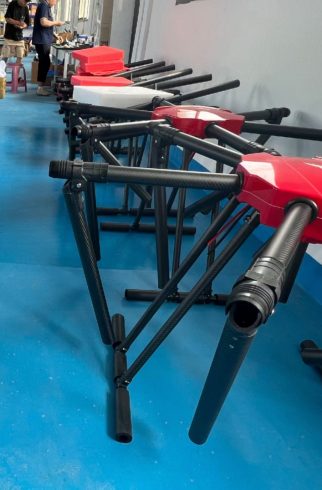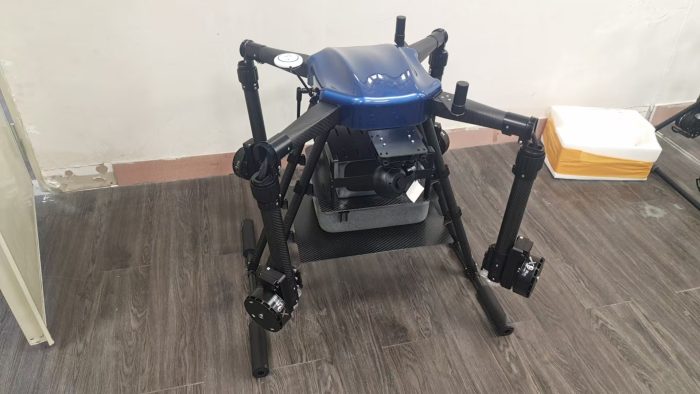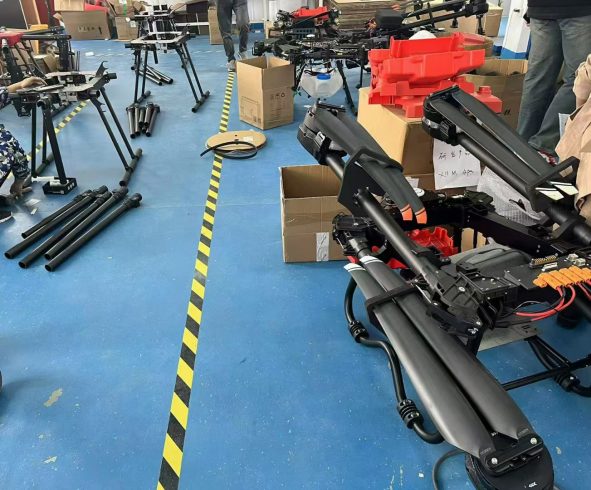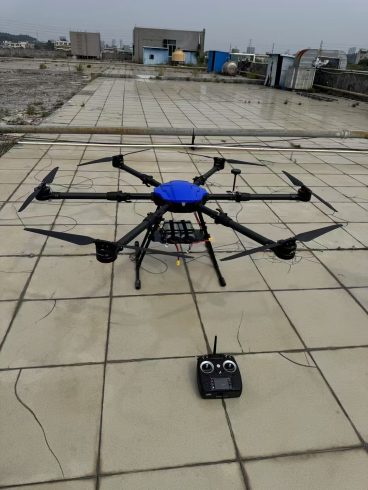![图片[1]-Reducing Chemical Waste with Drones: A Sustainable Leap in Precision Agriculture-msoen](https://www.msoen.com/wp-content/uploads/2025/04/0e151c96c1214759-768x1024.jpg)
The overuse of pesticides, herbicides, and fertilizers has long plagued conventional farming, leading to environmental degradation, soaring costs, and regulatory scrutiny. Enter agricultural drones—revolutionary tools that slash chemical waste while boosting crop health. By merging precision technology with eco-conscious practices, drones are redefining how farmers protect and nourish their fields. This article explores the strategies, technologies, and benefits behind chemical waste reduction through drone spraying.
The Problem of Chemical Waste in Agriculture
Traditional spraying methods, such as tractor-mounted systems or manual application, often result in:
- Over-application: Blanket spraying covers non-target areas, wasting up to 40% of chemicals.
- Drift: Wind carries chemicals to nearby water sources, wildlife habitats, or organic fields.
- Soil and Water Contamination: Excess chemicals seep into groundwater or cause nutrient runoff.
- Resistance Buildup: Overused chemicals accelerate pest and weed resistance.
Drones tackle these issues head-on by delivering the right amount of chemicals, to the right place, at the right time.
How Drones Minimize Chemical Waste
- Targeted Spraying with AI and Sensors
- Multispectral Imaging: Drones equipped with multispectral cameras identify stressed crops, pest infestations, or nutrient-deficient zones. This allows farmers to spray only affected areas, reducing chemical use by 30–70%.
- AI-Powered Weed Detection: Machine learning algorithms distinguish weeds from crops, enabling herbicide applications solely on invasive plants.
- Variable Rate Technology (VRT)
- Dynamic Rate Adjustment: Drones adjust spray volume mid-flight based on real-time data like crop density, soil moisture, and wind speed. For example, sparse crops receive less fertilizer, while dense canopies get optimized fungicide doses.
- Zone-Specific Prescriptions: Farmers pre-map fields into zones (e.g., high-pest-risk areas) and program drones to apply customized chemical rates per zone.
- Ultra-Low Volume (ULV) Spraying
- Micro-Droplet Technology: Drones emit droplets as fine as 50 microns, ensuring even coverage with minimal liquid. ULV spraying uses up to 90% less water and chemicals compared to conventional methods.
- Reduced Drift: Smaller droplets are engineered to resist wind drift, staying on target.
- Real-Time Environmental Monitoring
- Onboard Weather Sensors: Drones measure wind speed, humidity, and temperature during flight. If conditions risk drift (e.g., sudden gusts), spraying pauses automatically.
- Terrain Mapping: Lidar sensors create 3D field maps to adjust nozzle height, preventing overspray on slopes or uneven terrain.
Case Study: Cutting Costs and Waste in Row Crop Farming
A Midwest corn farm adopted drone spraying to combat herbicide-resistant weeds. By using AI to spot-spray only infested zones, the farm:
- Reduced herbicide use by 55% (saving $12,000 annually).
- Lowered water consumption by 80% through ULV technology.
- Achieved 25% higher yields due to healthier, chemical-stress-free plants.
Environmental and Economic Benefits
- Soil Health: Reduced chemical saturation preserves microbial diversity and soil fertility.
- Water Protection: Precision spraying minimizes toxins leaching into rivers or aquifers.
- Lower Carbon Footprint: Fewer tractor passes mean less fuel use and emissions.
- Cost Savings: Farmers save 20–50% on chemical purchases and disposal costs.
Overcoming Challenges
While drones excel at waste reduction, adoption barriers remain:
- Initial Investment: High-quality spraying drones cost $10,000–$30,000. However, subsidies and leasing models are easing this burden.
- Regulatory Hurdles: Strict drone aviation laws in some regions require certifications.
- Technical Training: Farmers need education to interpret drone data and optimize spray plans.
Future Innovations in Waste Reduction
- Autonomous Swarms: AI-coordinated drone fleets that self-optimize spray routes for zero overlap.
- Biodegradable Smart Chemicals: Drones deploy time-release capsules that activate only upon contact with pests.
- Blockchain Traceability: Immutable spray logs prove compliance with eco-certifications like Organic or Regenerative Farming.
Conclusion
Drones are not just cutting chemical waste—they’re fostering a new era of resource-efficient, environmentally responsible farming. By replacing guesswork with pixel-perfect accuracy, this technology empowers farmers to meet rising food demands without sacrificing ecological balance.
As AI, sensor tech, and green chemistry evolve, drones will further shrink agriculture’s chemical footprint. For forward-thinking farmers, adopting drone spraying isn’t just a cost-saving move; it’s a commitment to sustainable stewardship of the land.












暂无评论内容